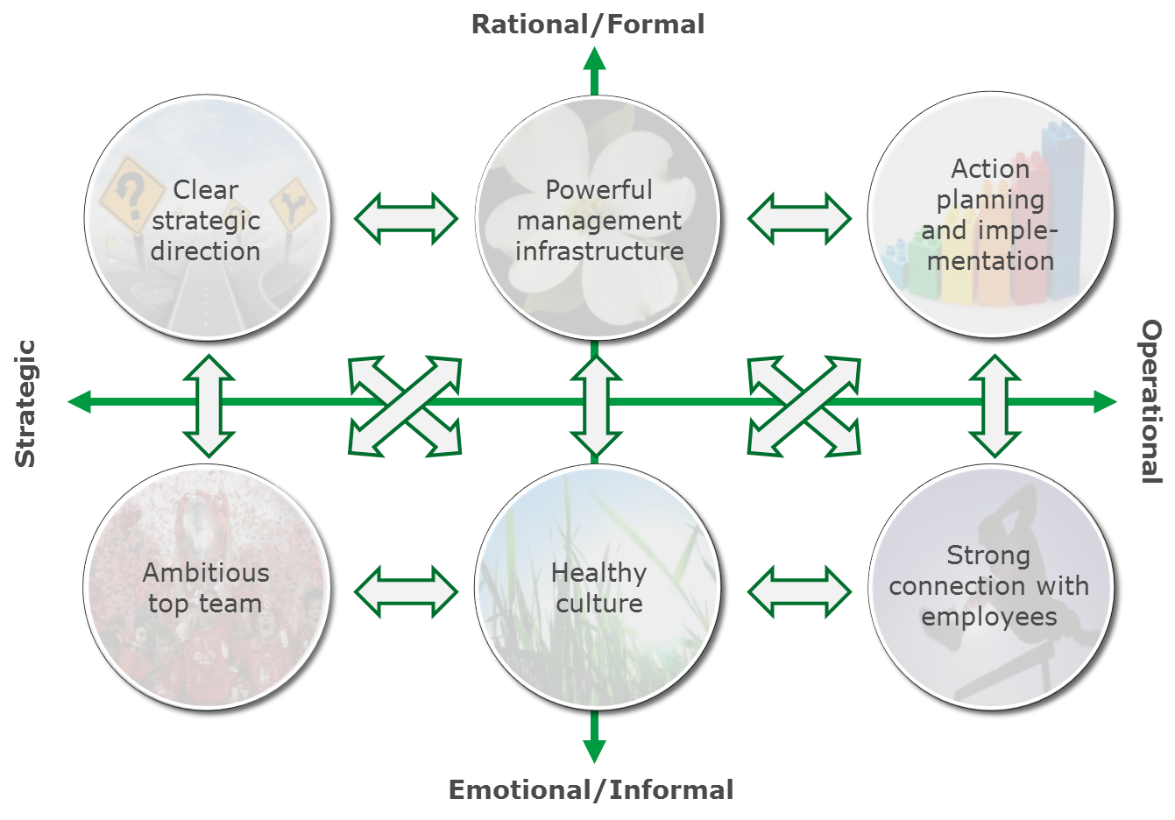by Geert Letens, PhD, CPEM
Getting an organization back on track or changing its course can be an adventurous journey. Many (engineering) managers try to instill new directions for their companies, but according to three decades of literature on change, more than 70% of them fail to successfully implement their change programs. Not really an encouraging perspective in a fast-changing world. Unless…
There can be a new holistic way of looking at change that allows you to assess your organization’s change readiness, identifying the levers that deserve your attention to significantly improve your organization’s change success rate. I must admit that as one of the co-developers of this approach, I am completely biased. Fortunately, however, the new model that we have developed is not yet another opinion-based framework. It is grounded in the literature, and what’s more, empirically tested in more than 200 organizations of different size, sector etc.
The new change concept starts from the notion that change requires energy. Everything is energy – you may remember that from your physics course, right? It’s not any different with change. If an organization lacks the energy to change, it will stick to the status quo or it will lose its competitive edge when external circumstances change. So, my colleagues, Peter De Prins and Kurt Verweire from Vlerick Business School, and I investigated where companies lose energy in their change programs. As such, we’ve identified six batteries of change (sources of energy) that help to explain why change efforts fail… Or succeed. After all, there is also a positive connotation to the six change batteries. If you charge the change batteries, they generate the energy that will help you move your change program in the right direction.

Some of the change batteries are rational and formal. You may recognize them from the typical top-down approach that many organizations use while setting up their change programs: identify the right strategy, align your KPIs and priorities to this new direction, and use this to define the scope and expected outputs of your projects. All this sounds logical and indeed, this is essential, but…not enough.
There are also three batteries that are emotional and informal. They come from Organization Development theories that advocate change needs to come from highly motivated employees who are supported by an engaging culture and inspired by top leaders that serve as role models for the change. Equally important, but again, not enough if the upper batteries are not able to provide clarity and focus.
You may notice that some batteries are oriented towards the strategic level of the organization while other batteries deal with the more operational aspects of managing a business. There are also two batteries that serve as a bridge between the top (left batteries) and the bottom (right batteries), which many organizations seem to be struggling with. If so, they lack the alignment of goals with action (upper batteries), or, they lack the alignment of words with behaviour (lower batteries).
As such, we’ve learned that effective change management is about managing energy balance (rational versus emotional) and flow (from the top to the bottom and vice versa) across the batteries of change. The data from our research is very clear. 30% of the organizations that only manage to create positive energy in two (or less) batteries report change success. This is pretty much in alignment with the many quotes from the literature that claim that 70% of all change programs fail. However, 95% of the organizations that created positive energy in five or six batteries considered their change programs as successful. Yes, we can!
In short: together, these batteries offer a comprehensive and integrative view on the effectiveness of your change programs, identifying which elements contribute to success and which ones contribute to failure.
Simple, but far from simplistic. To measure your organization’s change energy, we have identified five criteria for each battery. The validated questionnaire that we use to assess organizations entails more than 100 questions that aim to predict your organization’s success rate, but also serve as an essential guide to design your change programs. If you want to get a snapshot of the change energy profile of your organization, you can fill out the quick scan that is available in the book, or use these links to see if you have a healthy culture and a powerful infrastructure for change. If you want to find out more details about the six batteries of change, the following white paper might be a good read as well.
Good luck on your change journeys!
About the Author
